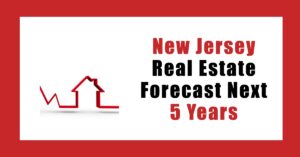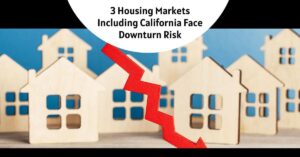The New Jersey housing market is characterized by robust demand, driven in part by buyers seeking quality education, employment opportunities, and lifestyle amenities. Millennials, entering their prime home-buying age, are transitioning from renting to buying, driven by a desire for more space and stability amid the pandemic.
Retirees, in search of low-maintenance and affordable living options, are increasingly drawn to New Jersey's adult communities The New Jersey real estate market is poised for continued strength over the next five years, albeit with some moderation in price appreciation. Several key factors contribute to this forecast:
Factors Driving Growth
- Continued job growth: New Jersey boasts thriving industries such as finance, pharmaceuticals, and technology, all anticipated to experience sustained growth, driving increased demand for housing.
- Strong demographics: With a burgeoning population of millennials and Gen Zers entering their prime homebuying age, the demand for housing, especially rental properties, is expected to remain robust.
- Limited supply: The scarcity of available land in New Jersey presents a challenge for new home construction, contributing to the maintenance of elevated property prices.
Potential Moderators of Growth
Despite the positive outlook, certain factors may temper the pace of price growth in the New Jersey real estate market:
- Rising interest rates: The Federal Reserve's efforts to combat inflation through interest rate hikes may increase the cost of borrowing, potentially impacting affordability for some prospective homebuyers.
- Economic uncertainty: Global challenges, such as the conflict in Ukraine and the lingering effects of the pandemic, introduce economic uncertainties that could make individuals more cautious about entering the housing market.
Probable Forecast for the Next Five Years
Here's a breakdown of the projected home price growth in New Jersey from 2025 to 2029. Factors such as high interest rates may limit rapid growth, yet demand is expected to keep prices from falling.
- 2025: Anticipated 2-4% increase in home prices.
- 2026: Home prices are forecasted to rise by 1-3%.
- 2027: Expecting a 1-2% increase in home prices.
- 2028: Home prices are projected to rise by 1-2%.
- 2029: Prices are expected to stabilize with a projected increase of 1-3%.
This outlook reflects ongoing trends in the housing market, including rising costs associated with mortgages for new buyers, which are projected not to lead to significant declines in home prices as seen in past market downturns.
The New Jersey housing market is poised to remain strong and resilient over the next five years, notwithstanding challenges and uncertainties. It's crucial to note that these figures are forecasts, and actual results may vary. Potential buyers and sellers are advised to carefully assess these factors before making any real estate decisions.
New Jersey Real Estate Market Forecast
The New Jersey real estate market in 2024 is expected to be a story of moderation, following a period of white-hot competition and significant price increases in recent years. Here's a closer look at the key trends shaping the market:
Inventory Levels:
- Low Inventory Persists: One of the defining features of the New Jersey market for some time now has been the lack of available homes. While there may be some slight improvements compared to 2023, inventory is still expected to remain tight. This means sellers will likely continue to hold some leverage in negotiations.
Price Trends:
- Continued Growth, But at a Slower Pace: Experts predict that home prices in New Jersey will continue to rise in 2024, but at a slower rate than what we've seen in the past. This is due to a combination of factors, including rising interest rates and a more balanced market with increased buyer options.
Regional Variations:
I've been keeping a close eye on market trends, and Zillow's recent data gives us some pretty clear insights for various metro areas within New Jersey. Here’s what they predict for price changes using their MSA Forecasts:
| Metro Area | Forecasted Price Change (Jan 31, 2025) | Forecasted Price Change (March 31, 2025) | Forecasted Price Change (Dec 31, 2025) |
|---|---|---|---|
| Trenton, NJ | 0.3% | 1.4% | 4.8% |
| Atlantic City, NJ | 0.5% | 1.9% | 6.9% |
| Vineland, NJ | 0.3% | 1.5% | 6% |
| Ocean City, NJ | 0.3% | 1.5% | 5.9% |
As you can see, all of these areas are expected to see an increase in home values through the next year. Atlantic City is predicted to have the highest gains with a nearly 7% jump in prices by the end of 2025.
Is a Housing Market Crash Coming?
Honestly, I don't see a major crash on the horizon for the New Jersey real estate market. While some may fear a repeat of the 2008 crisis, the situation is different now. Interest rates are higher, which has cooled the frenzy a bit but is not enough to bring down the current demand. Inventory of homes for sale is still low in many areas. This lack of supply is still putting upward pressure on prices, as buyers outnumber sellers in many New Jersey towns. So, while we may not see the wild price surges of the past few years, a significant drop is not very likely based on current data.
Buyer Activity:
- Return of More Balanced Market: With rising interest rates, some buyers who were priced out of the market in 2024 may find themselves with more opportunities in 2025. This could lead to a more balanced market with increased competition but less of the frenzy seen in previous years.
- Impact of Interest Rates: Mortgage interest rates are a significant factor influencing affordability. While rates are expected to drop in the second half of 2025, they will likely remain higher than the historic lows of recent years. This will undoubtedly impact buyer purchasing power.
Market Outlook:
- Gradual Shift: The New Jersey real estate market appears to be transitioning from a seller's market to a more balanced market. This is likely to be a gradual shift, and sellers may still enjoy some advantages. However, buyers will also have more opportunities to negotiate and find homes that fit their budget.
Local Market Insights:
- Importance of Local Expertise: The data suggests that there will be variations in price growth across different regions in New Jersey. To get the most accurate forecast for a specific area, it's crucial to consult a realtor with expertise in that local market. They can provide insights into specific neighborhoods, property types, and market trends that can significantly impact your buying or selling decisions.
Overall, the New Jersey real estate market in 2024 is expected to be one of moderation. While inventory is likely to remain tight, price growth is predicted to slow down. Rising interest rates will be a factor for buyers to consider, but a more balanced market may emerge with increased opportunities for both buyers and sellers.
Recommended Read:
- New Jersey Housing Market: Trends and Forecast 2025
- NYC Housing Market: Prices, Trends, Forecast 2025
- Housing Market Predictions for Next Year: Prices to Rise by 4.4%
- Housing Market Predictions for the Next 4 Years: 2025 to 2029
- Housing Market Predictions 2030: 12 States Expected to Skyrocket
- Housing Market Predictions 2027 by Moodys and Goldman Sachs
- Housing Market Predictions: Will Trump or Harris' Policies Help You?





